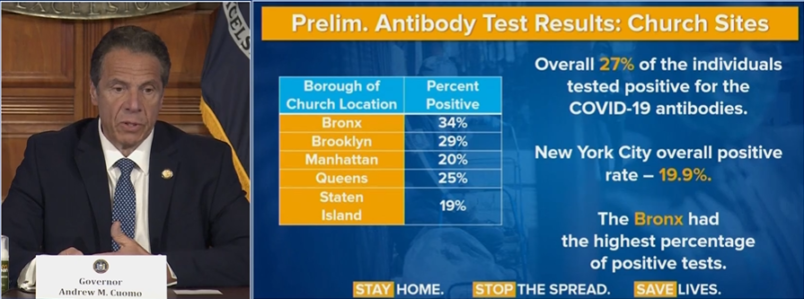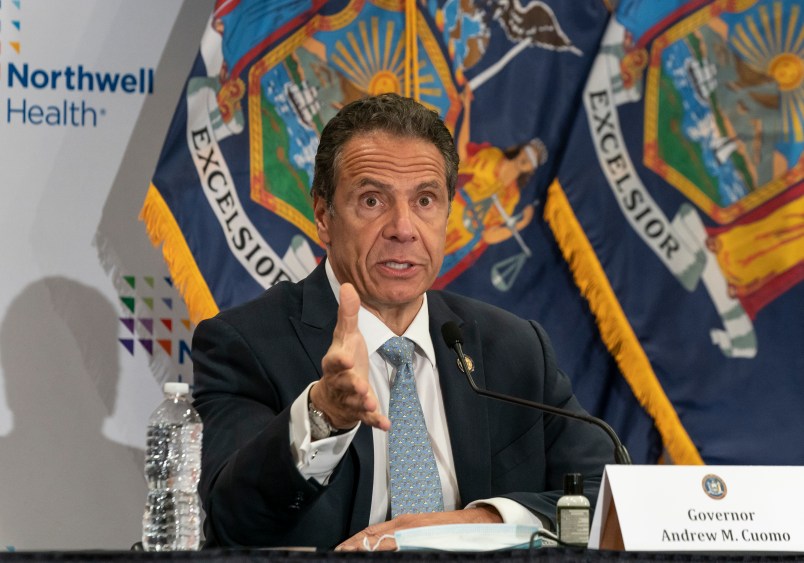Thousands of coronavirus tests performed in low-income communities of color around New York City showed rates of infection much higher than the city average, New York Gov. Andrew Cuomo said Monday.
Cuomo described preliminary data from about 8,000 tests performed by the health care provider Northwell Health during a slideshow presentation; he didn’t go through underlying data or details about testing procedure. The screenings were the result of a partnership between Northwell, New York’s department of health, and several churches throughout the city that are serving as testing centers.
The tests showed the disparate impact of the viral disease: 27% of those tested across the churches in low-income neighborhoods carried COVID-19 antibodies, Cuomo said, compared to the 19.9% overall rate in the city.
A whopping 34% of those tested in the Bronx were positive for antibodies, compared to 29% in Brooklyn and 25% in Queens, Cuomo said. Staten Island and Manhattan hovered around the city-wide average.
“The data shows not just a high positive — not just that a high number of people had the positive — but the spread is continuing in those communities and that’s where the new cases are coming from,” Cuomo said. “You can literally do that on a zip code basis.”

In Morrisania, in the Bronx, 43% of those tested were positive for antibodies, Cuomo said, more than double the city-wide rate. Forty-one percent of respondents at a site in Brownsville, Brooklyn, tested positive for antibodies. The sites had rates of hospitalization near or over double the rates city-wide, according to the preliminary data.
A spokesperson for Northwell told TPM in an email that it had “performed more than 9,250 tests in the first week at 11 churches.” The tests consisted of nasal swabs for the virus and antibody tests on alternating days, the spokesperson said.
The city’s viral disparities were also apparent in a map of case and death rates released by the city earlier this week, which showed the disparate impact of COVID-19 in lower-income areas far from the city’s wealthy center.







Good thing so many states are allowing in-person church services…oh, wait.
I’m sure the statistics are worse in disadvantaged communities for just about every health outcome that’s measured, starting with asthma and going right through the alphabet.
These neighborhoods are also where the sacrificial workers live.
I fucking hate this.
Me too, sister.